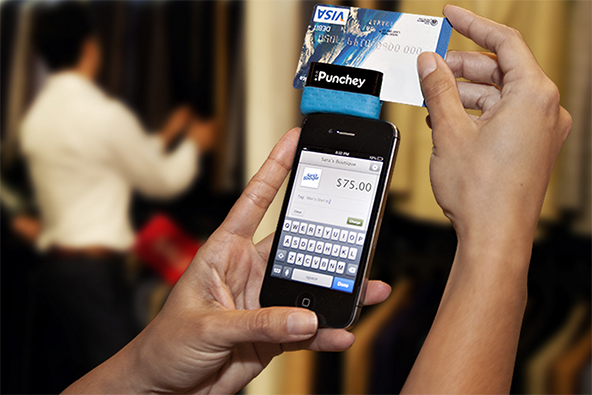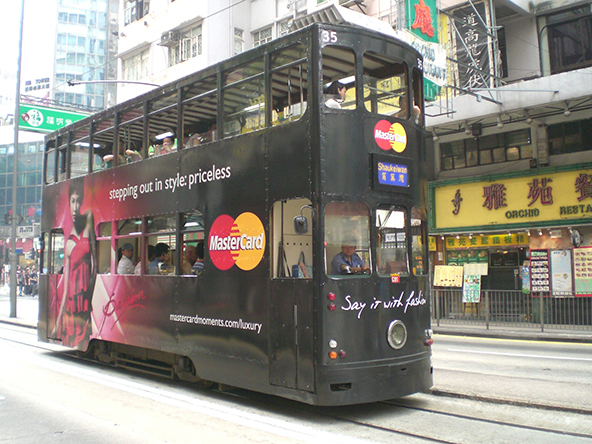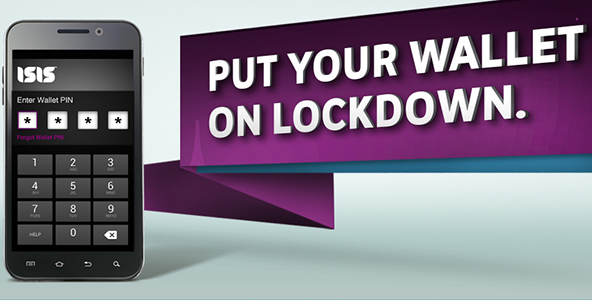Yet Another Doomed Start-up Is Punching at Square

GigaOm’s Kevin Fitchard reminds me this morning why getting your credit card processing analysis from a mainstream media outlet is a really bad idea. Fitchard has written a piece about yet another Square clone hoping to derail Jack Dorsey’s juggernaut that is so badly researched that is at best useless and at worst harmful for the hapless inexperienced merchants who choose to believe what the author tells them.
The start-up at issue is suggestively called Punchey and outwardly it looks pretty indistinguishable from its main target — Square — as well as from its countless clones. So why make another Square clone, I hear you ask. Well, that of course is precisely the right question and in his attempt to answer it, Fitchard gets it all wrong. The Punchey guys’ have decided that the chink in Square’s armor is the processor’s flat-rate pricing structure, which, by the way, is also utilized by all Square clones that I know of with the notable exception of Adyen. Under this pricing model, all card transactions — involving debit and the various types of credit cards — are processed at the same fixed rate, even though Square’s own cost varies greatly from one card type to another. Punchey’s solution is to offer an interchange-plus pricing structure, where every single transaction is processed at a rate that is individually determined. Now, in principle that is a great idea, as interchange-plus beats all other pricing models hands down. However, the trouble is that explaining it to the types of merchants Punchey is after is a lost cause. So yes, the start-up is doomed.
The Punchey Way
Let’s begin by taking a look at how Punchey has chosen to fight the big guys. As I said, on the surface, Punchey looks precisely as the original or any of its other U.S. clones — a small reader is plugged into the audio jack of the user’s phone for cards to be swiped through. All major U.S. payment cards are accepted and the service is compatible with iOS and Android devices.
Now on to the pricing, which is what is the issue here and is what Fitchard gets wrong. And, by the way, in his defense, this is something almost everyone gets wrong. Punchey charges 0.75 percent of the transaction amount plus the interchange rate at which each credit and debit card transaction is processed by the respective card association (Visa or MasterCard) or company (Discover or American Express). Now here is how Fitchard compares the newcomer’s pricing structure to the ones of its biggest competitors:
While Square and PayPal charge 2.75 percent and 2.7 percent respectively over the cost of a transaction, Punchey says its fees are only 0.75 percent. But in truth Punchey isn’t offering a flat all-inclusive fee like Square and PayPal. It charges additional rates for bank interchange fees plus 10 cents per transaction.
What is wrong with this statement? Well, rather a lot, I’m afraid and the way in which it is wrong goes to the heart of the issue with interchange, because that is how the average merchant also sees it. See, nowhere does Punchey say that “its fees are only 0.75 percent”. On the contrary, the start-up’s pricing page clearly states that its transaction fee is “0.75% + Interchange”. But Fitchard makes it sound as if the start-up is hiding the clearly stated fact that interchange is added to its own fee. As someone whose company has offered interchange-plus pricing to small merchants, I can testify that this is how people with no payment processing experience see it and no amount of explaining can change that fact. Trust me, we’ve tried it for years and it just doesn’t work. Larger, experienced merchants are, of course, a different story altogether, but they are not Punchey’s targets, nor could they be.
Keeping Things Simple
The biggest thing Square’s type of pricing (which was adopted by PayPal Here, Intuit GoPayment, Groupon and all other clones with the exception of Adyen) has going for it is its simplicity. The merchant knows precisely how much it is charged for each transaction. In stark contrast, with Punchey and any other processor using interchange-plus, the merchant doesn’t know in advance what each transaction’s processing rate would be. To illustrate that point, a couple of years ago I listed the then-current rates for some of the most widely used types of cards in the table below. I’ve updated the debit rates to account for the changes that resulted from the Durbin Amendment, but have left the credit card rates untouched (there may be some changes there as well, but if there were, they would be insignificant):
Visa and MasterCard Interchange Rates
| Visa Card Type | Interchange Rate | MasterCard Type | Interchange Rate |
| CPS/Retail — Card Present, Debit | 0.80% + $0.15 — Exempt
0.05% + $0.21 — Regulated |
Consumer Debit Merit 3 — Tier 1 | 0.70% + $0.15 — Exempt
0.05% + $0.21 — Regulated |
| CPS/Retail 2 — Card Not Present, Debit | 0.65% + $0.15 ($2.00 Cap) — Exempt
0.05% + $0.21 — Regulated |
Consumer Debit Merit 3 — Base | 1.05% + $0.15 — Exempt
0.05% + $0.21 — Regulated |
| CPS/Retail Credit — All Other | 1.54% + $0.10 | Consumer Credit Core Value Merit 3 — Base | 1.58% + $0.10 |
| CPS/Rewards 1 Credit | 1.65% + $0.10 | Consumer Credit Enhanced Value Merit 3 — Base | 1.73% + $0.10 |
| CPS/e-Commerce Basic | 1.80% + $0.10 | Consumer Credit Core Value Merit 1 | 1.89% + $0.10 |
| CPS/Rewards 2 Credit | 1.95% + $0.10 | Consumer Credit Enhanced Value Merit 1 | 2.04% + $0.10 |
| Commercial Level II | 2.05% + $0.10 | Commercial Data Rate 2 | 2.32% + $0.10 |
| Commercial Retail — Business | 2.20% + $0.10 | Commercial Data Rate 1 | 2.77% + $0.10 |
| Commercial Card Not Present — Purchasing | 2.55% + $0.10 | Commercial Standard | 2.95% + $0.10 |
As you see, interchange rates vary quite widely from one card type to another and so would the processing rates Punchey’s clients would end up paying. And that, it turns out, is a huge issue. You can use all kinds of statistics to show to a merchant that an interchange-plus type of a pricing structure would be saving him a lot of money over a flat-rate one, but it won’t work. If they don’t know their rate in advance, merchants feel cheated, or at least believe that there is a potential for it, and stay away. And it doesn’t help when someone tries to explain the difference between the two pricing structures when he himself knows nothing about the matter. Here is, for example, Fitchard’s attempt:
As an example, the company [Punchey] would charge $1.24 for a $100 transaction, less than half of Square’s $2.75.
Now, I ask you, how has Fitchard calculated the $1.24 charge? He makes it sound as if that is the fee Punchey would charge for any transaction, irrespective of the card type, which as you already know, cannot possibly be true, because transactions can be processed at a number of different interchange rates, which make up a portion of the overall fee paid by the start-up’s clients. In fact, nowhere in his piece does Fitchard indicate that he knows that interchange fees can vary — it is pretty clear that he doesn’t.
The Takeaway
The Netherlands-based mobile payments processor Adyen seems to be doing well using interchange-plus, but there is a crucial difference between it and Punchey: the European processor is targeting its offering at larger, established merchants, which are much more sophisticated when it comes to pricing than the U.S. company’s prospective clients. So Punchey has an enormously steep path to climb and ultimately the start-up will fail to convince merchants that its pricing structure is better than Square’s.
Image credit: Punchey.


